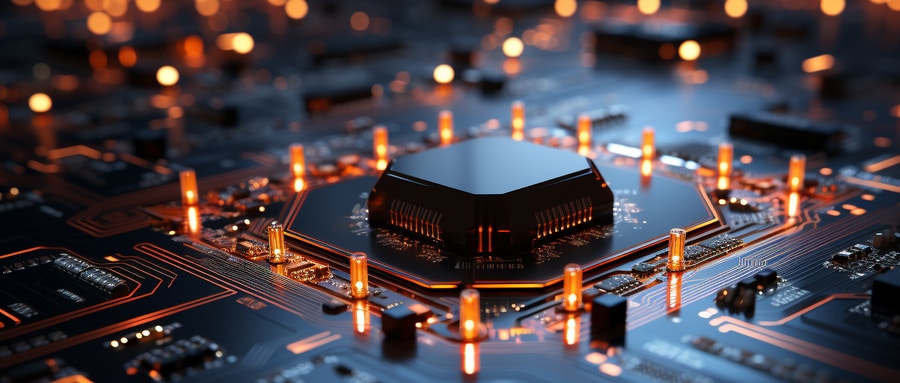Flex Rigid PCB – The Future of PCB in Evolving Tech World
The flourishing digital era requires constant innovation in electronics design. A notable step in this regard is Flex-Rigid Printed Circuit Boards (PCBs). These innovative PCBs combine the advantages of both flexible and rigid circuit boards for greater industrial versatility and innovation. This article will delve into this fascinating technology to provide you with an in-depth analysis of its potential – Flexible Yet Rigid: PCB’s Future Role in an Evolving Tech World’.
An Overview of PCB Technology
Printed Circuit Boards (PCBs) are essential parts of any electronic device, serving as its nerve centre by commanding each component to work in its specific way. Crafted from non-conductive material with copper pathways etched onto them to guide electricity where required. PCBs come in various forms including rigid and flexible options.
- Rigid PCBs: As the name implies, rigid printed circuit boards (PCBs) form the backbone of most electronic devices we use today.
- Flex PCBs: These boards combine flexibility with functionality to form compact yet resilient circuitry that is suitable for more intricate designs.
An Emergence: Flex Rigid PCBs
Technological progress was marked with the development of flexible-rigid PCBs – hybrid designs consisting of rigid and flexible areas to give electronics developers access to both rigidity and flexibility for maximum versatility.
Flex Rigid PCBs Offer Advantages
Flex-rigid PCBs boast several attractive attributes that make them the perfect solution for various applications.
- Space and Weight Efficiency: Their unique design provides for more compact and lightweight solutions than traditional PCBs.
- Increased Durability: Flex-rigid PCBs offer higher durability by eliminating connectors and soldering points that connect multiple boards together, significantly increasing their lifespan and lifespan of use.
- Cost Savings: While initial costs might be higher, long-term cost savings from reduced repairs and replacements make them unrivalled in terms of value for money.
- Integrated Design: By combining rigid and flexible PCBs in one design, an integrated solution helps avoid handling separate components individually.
Flex Rigid PCBs Are Capable of Unique Applications
Flex-rigid PCBs are widely utilized for high density applications that demand precision and durability, such as:
- Medical Devices: Because of their versatility and versatility, flexible material makes medical implants and monitoring equipment suitable candidates.
- Aerospace and Defense Industries: Flex-rigid PCBs are highly used by these industries due to their durability in extreme conditions and small form factor. Their superior reliability makes them attractive products in these sectors.
- Consumer Electronics: With smartphones and tablets becoming more compact than ever, these PCBs enable complex circuitry to fit in a slim and portable package.

Conclusion of PCB Future Development Plans
Demand for high-powered electronics packed into compact packages has created unprecedented pressure for PCB design to evolve. Flex-rigid PCB usage is already reaching peak levels across multiple industries and its development promises an endless world of electronic possibilities.
Understanding flex-rigid PCBs gives us insight into their enormous influence on modern electronics. Their combination of flexibility, ruggedness and compactness will undoubtedly lead to sleeker, more robust designs in future electronics devices.
Note: This article serves as an overall introduction to Flex-Rigid PCBs; however, their exact applications vary across industries and applications. For further insight, contact an industry professional.
FAQ:
- What does Flex Rigid PCB mean?
Flex Rigid PCB, also called Rigid-Flex PCB, includes both flexible and rigid board technologies. This combination provides both the versatility of flexible circuits and stability of rigid boards. - What are the applications of Flex Rigid PCBs?
They are used across industries like aerospace, medical, telecommunications, and consumer electronics due to their rigorous performance in space consternation and three-dimensional packaging scheme. - What are the advantages of using Flex Rigid PCB?
They offer benefits like design freedom, durability, improved heat dissipation, and reduced package size and weight. - How is the assembly process different for a Flex Rigid PCB compared to a traditional PCB?
With the flexibility of Flex Rigid PCBs, few components can be assembled before the board is fully folded, which might be impossible with traditional rigid boards. - Why is a Flex Rigid PCB more expensive than a traditional PCB?
The manufacturing process of Flex Rigid PCBs is more complex which increases the cost. Also, materials and technologies used in Flex Rigid PCBs are more advanced, contributing to the extra cost. - Does the flexibility of a Flex Rigid PCB affect its durability?
Contrarily, their flexibility contributes to their durability as they can withstand more physical stress compared to traditional PCBs. - What types of Flex Rigid PCBs are there?
There are different types like single-sided, double-sided, multilayer, and rigid-flex. - Can I customize my Flex Rigid PCB designs?
Absolutely, manufacturers usually work closely with clients to produce custom Flex Rigid PCBs based on their needs and specifications. - Are Flex Rigid PCBs environmentally friendly?
They tend to use fewer materials and allow smaller device footprints, contributing to environmental sustainability. - What are the design guidelines for Flex Rigid PCBs?
You should consider factors like the appropriate bend radius, stiffener placement, mechanical and thermal stress, and many more.























